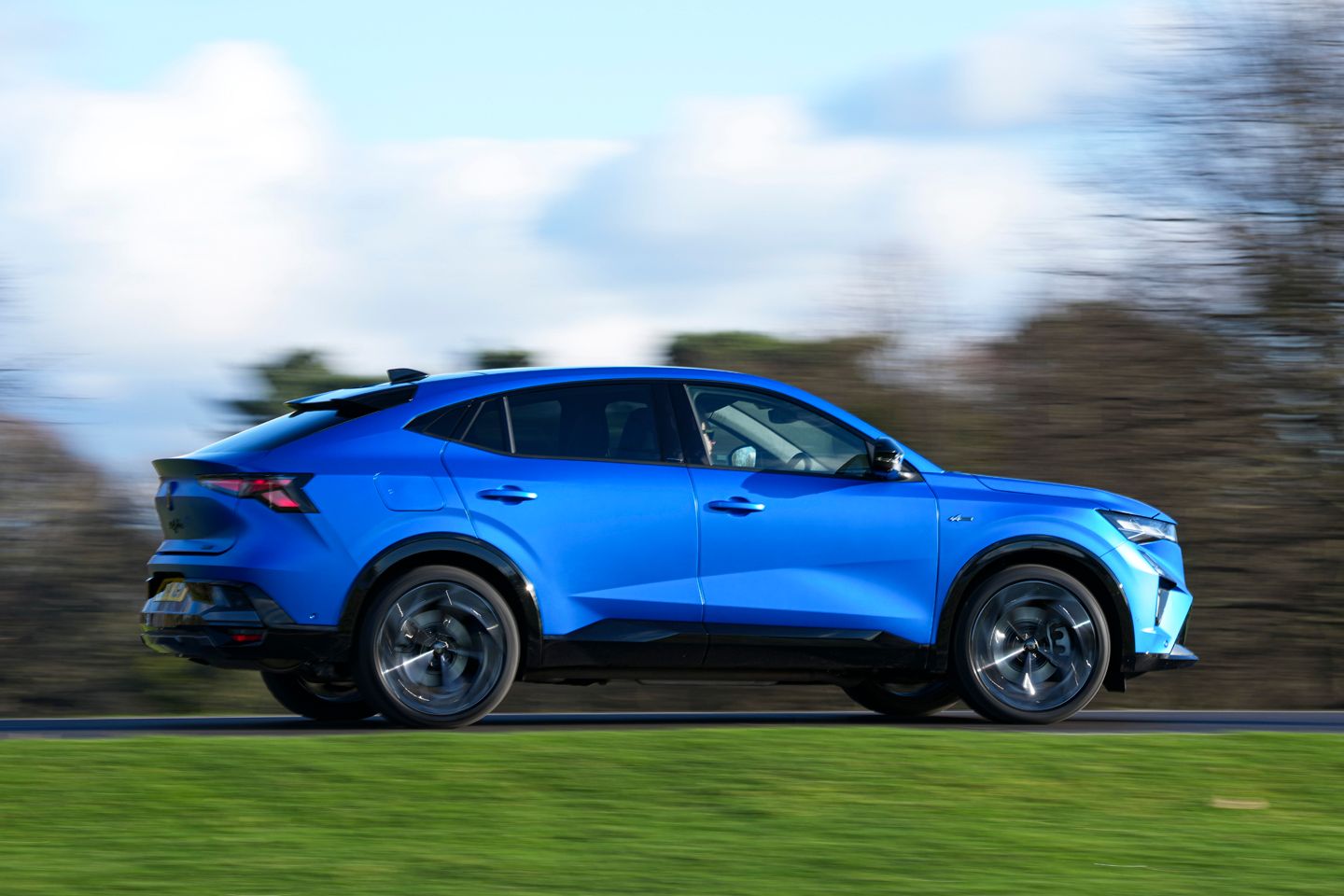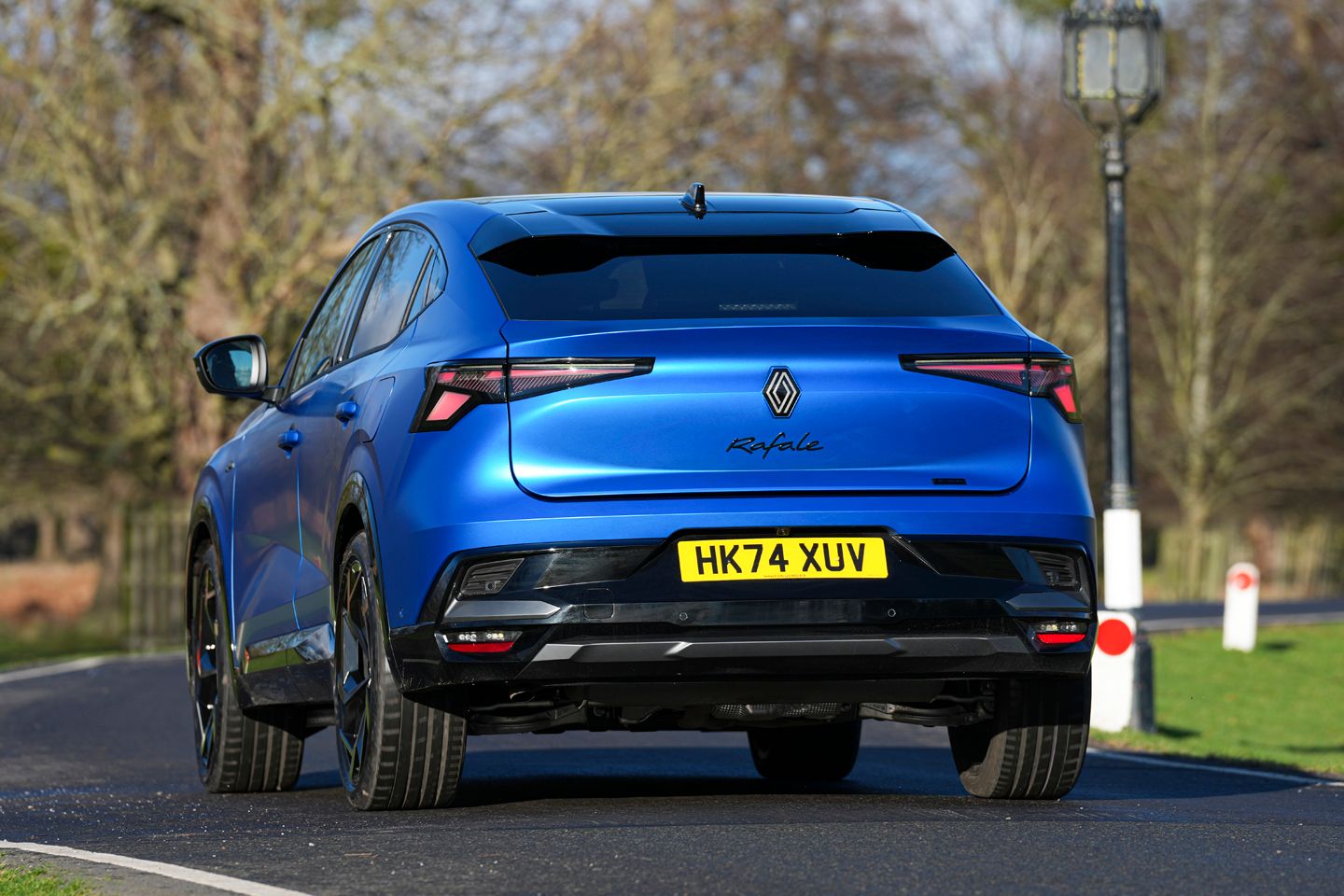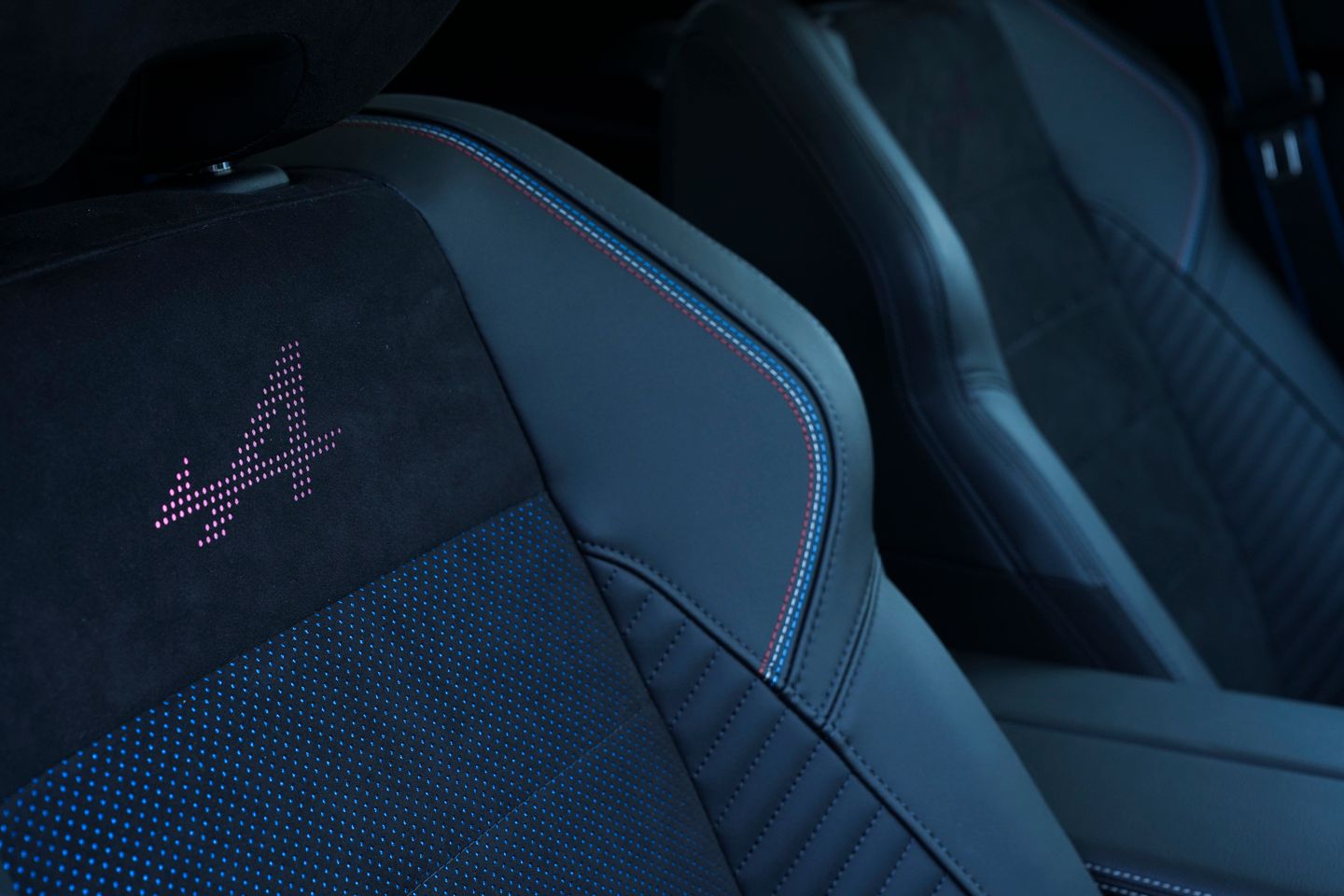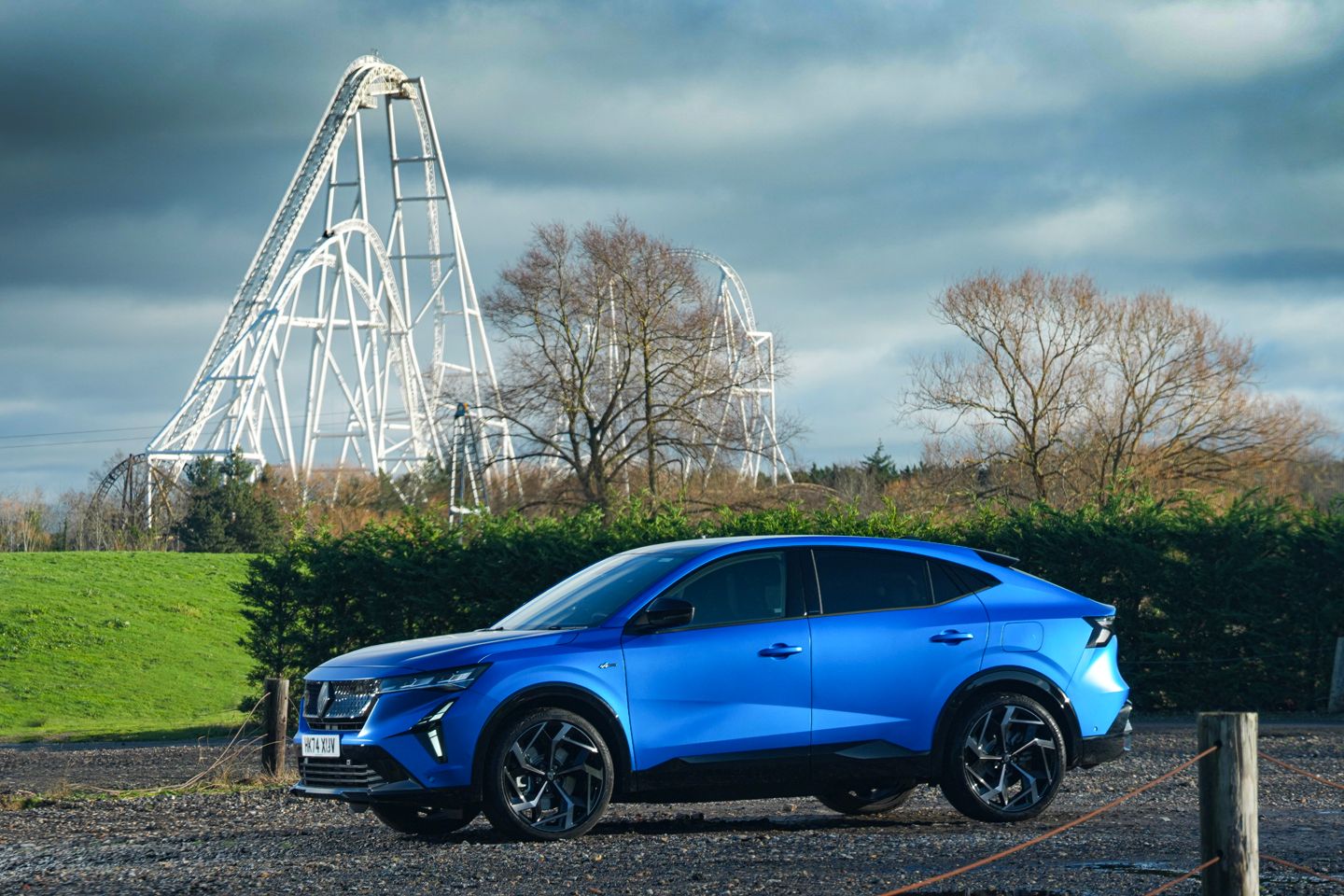
While a lot of attention has quite rightly been paid to the 4 and 5 of late, the rest of the Renault E-Tech range has been growing as well. Just not with a commensurate amount of enthusiasm. The small EVs are exciting because they’re so unmistakably Renault; the rest of the lineup is perhaps not quite so distinctive. The Symbioz, Arkana and Austral are all available as E-Tech hybrids, and are all three separate models, but we’ll bet on there being a good few PHers who’ve never heard of more than one.
On the face of it, the Rafale could be more of the same, because it appears a slightly different take on the electrified coupe SUV thing that we’re told customers can’t get enough of. It’s styled nicely enough, if relying quite heavily on the giant diamonds to give it some identity. 21-inch wheels and black accents do mask the bulk and some fancy light signatures are par for the course rather than distinguishing features these days.
However, there’s reason to show a little more interest in this Rafale than most, because it’s an atelier Alpine model. This not only means a 300hp plug-in powertrain not offered anywhere else in the Renault range, it also signifies a chassis with some Alpine input as well. Which isn’t just a badge and an increase in spring rates, either. Unique to this model (there’s a cheaper techno esprit Alpine with the powertrain) is a predictive suspension system that continuously adjusts the damping according to what a camera says the upcoming terrain will be like. Which is a very French addition to a £50k SUV; the main selling point of a flagship model £4k more than the other one, alongside a big glass roof, upgraded stereo and powered boot, is fancy suspension. Can’t see it, can’t have it demonstrated in a showroom, must be driven for full effect. That’s alongside 4Control all-wheel steering and four-wheel drive that’s standard on the PHEV. It’s claimed that the ‘exclusive chassis set-up developed by Alpine Cars’ engineers pushes the dynamic envelope still further.’ So does it?


The Rafale feels like every other PHEV to begin with, responsive to throttle inputs and with a smooth handover between power sources. Renault’s E-Tech solution here is even more complex than most, which feels decidedly strange given it’s likely to remain in the Rafale exclusively: as well as a combustion engine (more powerful than in the normal hybrid thanks to a larger turbo) and a rear motor for four-wheel drive, there’s an additional front electric motor as well. Plus an integrated starter generator. So the Rafale has four power sources; the fact it works so coherently is impressive. There’s 150hp from the 1.2-litre three-cylinder turbo, 70hp from the front motor, 136hp from the rear one and 34 from the starter generator – or 300hp in total. Torque is 320lb ft if you add peaks together, though Renault says the actual figure isn’t the cumulative total. Whatever the number, it’s available from 1,750rpm, and certainly the Rafale is brisk and willing enough when pottering about. Your Dad wouldn’t be able to grasp it’s a 1.2, put it that way.
The continuously variable damping system does seem quite clever, too; tautly suspending the Rafale so that it always feels usefully agile and energetic without abandoning ride comfort. While the claim of 10 engineers spending three years on it feels like the proverbial lady protesting too much, it’s clear from the first drain cover that this isn’t merely another plug-in electric SUV. There’s some purpose and polish to the way that it rides and handles, smothering the worst of the road without entirely isolating you from it in a very French fashion.
The 4Control is better resolved here than in the old Renault Sport Meganes, with a better feel when you first turn, and it means a convincing sense of poise and agility whatever is asked of the Rafale. Tellingly, too, a Sport mode (included alongside a personal setting, Eco, Comfort, Snow and so on) doesn’t spoil the experience with a load of unnecessary steering weight or rock-hard suspension; there’s a modest uplift in effort for a modestly more dynamic experience. It does feel like time has been spent on getting the calibration right, rather than merely cranking it all to 11 in a family car for ‘sportiness’.


It means the atelier Alpine Rafale can bring a little bit of joy to even mundane journeys, scooting merrily around roundabouts and displaying an unexpected amount of enthusiasm and energy when corners do present themselves. Even the traditional assists are reasonably tactful. The predictive nature of the suspension means it tends to remain broadly unflustered and unfazed as the road changes; it’s very easy to maintain the speed that’s been accrued because the chassis is as capable as it is.
This isn’t a Renault Sport SUV, or even a full Alpine-spec one in truth, though the fact there is just a hint of the special sauce to the Rafale’s drive is welcome. All too often exciting badges have been gratuitously applied to workaday models for some much-needed glamour; it’s nice to know the Alpine treatment here is more than skin deep. With any luck, it might surprise you with the way it goes down a road as it did us.
The rest of the package is fine, more often than not with one element detracting from the appeal of a related part. The regen is nicely calibrated in all settings, usefully controlled by (cheap feeling) wheel paddles, which is handy as the brake pedal is spongey and difficult to modulate. The interior looks really smart, including French tricolour stitching for this model and glowing ‘A’ logos in the seats, the appeal of which is slightly undone by cheaper plastics low down and flimsy feeling doors. The infotainment, underpinned by an Android operating system, is typically very slick and super fast, though some functions are tricky to find. And moving the electric seat shifted the portrait screen from the trip computer to CarPlay, and wouldn’t revert back without the right button prods again.


Performance is good enough, and typically the engine is well subdued, though there’s an occasional gruffness, perhaps on startup or under load, that’s to be expected of a 1.2-litre triple – if not a £50k range flagship. It can take a beat to get the full 300hp too with the throttle matted, like all those power sources aren’t quite sure, should that be a priority on the way to swimming lessons. A clever blend of the power sources means a Rafale will be above 40mpg even with the battery showing zero miles (but always with something in reserve); a fairly substantial 22kWh battery is going to cover a useful amount of driving given the claim of almost three miles per kilowatt hour (59 miles max), and somewhere near that in reality. Even 40 miles of electric running, complete with its funky whirr, would get the Rafale a lot of places without the engine. And with sufficient performance, too, which up until recently wasn’t always the case with big plug-in hybrids.
Attempting to rank the atelier Alpine is challenging without much experience of its direct rivals or the rest of the Rafale range. That being said, it’s hard to imagine the cheaper PHEV driving quite this smartly, and even with a weight advantage the regular hybrid is noticeably down on power. This one feels like it’ll be the pick of the range, which arguably it should be as the most expensive and powerful. But it’s nice to know the premium for an atelier Alpine seems justified, and isn’t just marketing spiel. The Renault’s vital stats are comparable with rivals from Lexus, Skoda and Volvo, 12/gkm and 565mpg will have their benefits, and Renault’s finance deals look good at the moment. Those in the market for a swoopy D-segment SUV, as Renault believes many are, ought to have the Rafale on their shortlist.
SPECIFICATION | RENAULT RAFALE E-TECH 300 ATELIER ALPINE
Engine: 1,198cc, three-cyl turbo, 22kWh battery, front and rear electric motors, integrated starter generator
Transmission: 6-speed auto (4 gears with 2 additional motors/electric gears), four-wheel drive
Power (hp): 300 (150hp from engine, 70hp from front motor, 136 from rear, 34 from starter generator)
Torque (lb ft): 320@1,750rpm (170lb ft plus 150lb ft from engine and electric, ‘not cumulative’
0-62mph: 6.4 seconds
Top speed: 111mph
Weight: from 1,950kg
MPG: up to 564.9
CO2: from 12g/km
Price: £49,695 (price as standard; price as tested £51,395, comprising Matte Satin Paint for £1,700)




